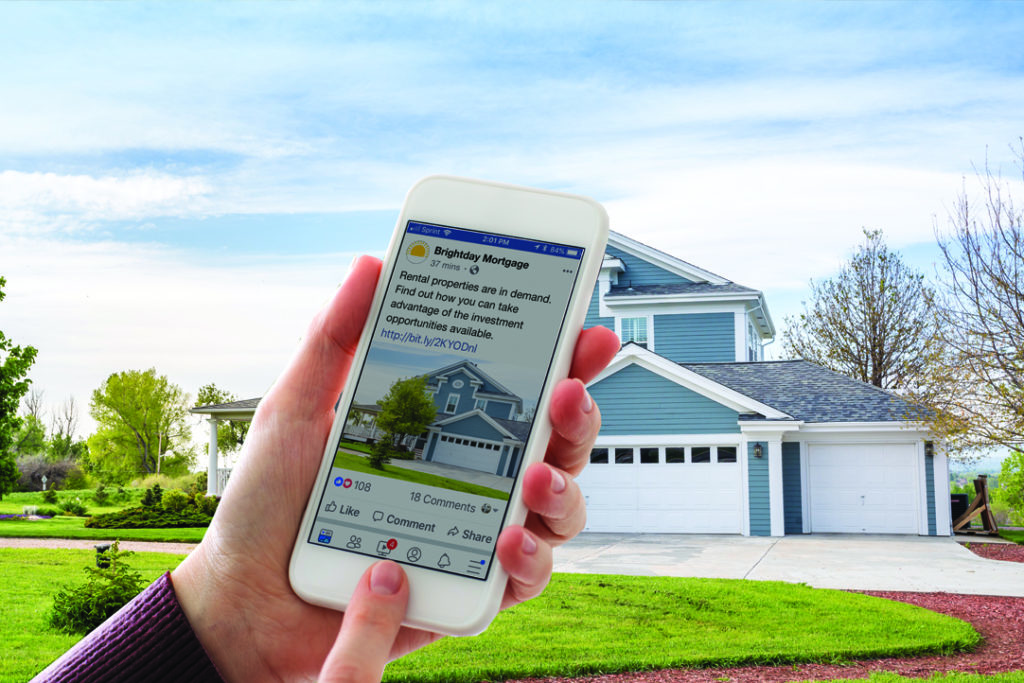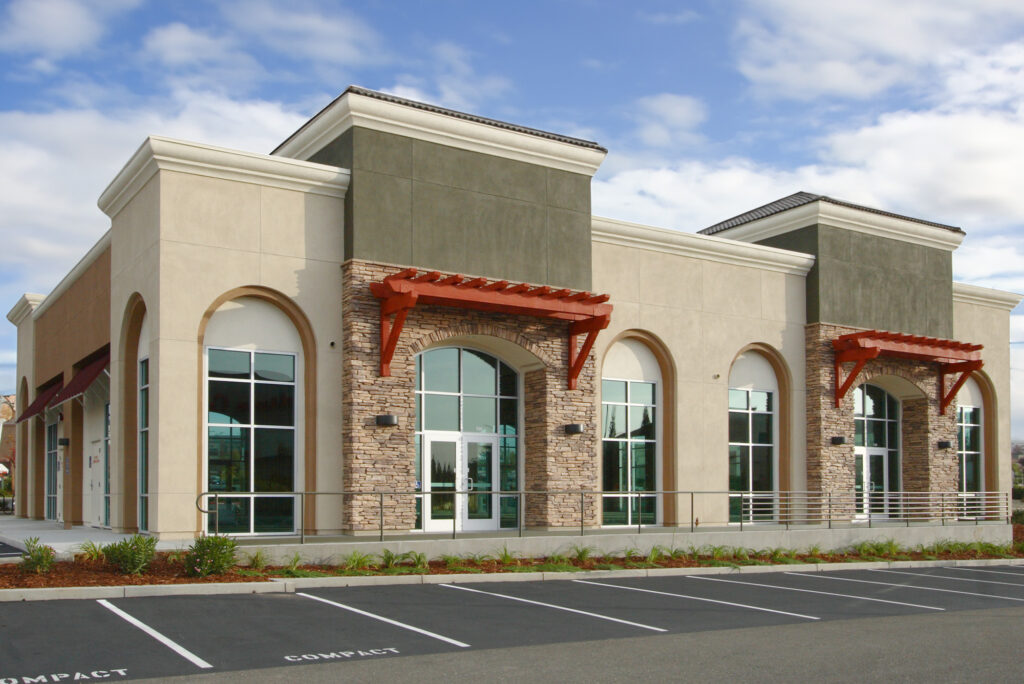
Social Media Strategies for Mortgage Brokers
Platforms like LinkedIn, Twitter, and Facebook have created new opportunities for residential mortgage brokers to widen their nets and connect with prospective residential and small balance commercial property investors through effective social media strategies.
Using social media is a relatively inexpensive vehicle to reach potential clients, and it can help you expand well past your local network. According to the 2013-2014 Realtor® Technology Survey, there are approximately 2 million actively licensed real estate professionals in today’s market — 91% of which use social media on a regular basis.
Targeting Makes Social Media Effective
Except for the professional-focused LinkedIn network, most of us equate social media to an electronic family photo album and long-winded rants on election conspiracy theories from high school friends you haven’t heard from in years. However, these personal stories, images, and videos create huge audiences that rival those of traditional media channels like television and print.
The real beauty of social media is the information collected on users that allow advertisers to assemble audiences of individuals who share the same interests and passions. Although you can’t see the personal data for an individual social media member, you can easily create an audience of people based on their shared interests, for example, real estate investing or their job title, and target them with advertising to generate awareness for your company and drive traffic to your website.
Social media enables brokers to target their message to people who can directly impact the growth of their business at a relatively low cost compared to other media channels. You can easily assemble multiple audiences of real estate investors, agents, and attorneys who handle investment and small balance commercial property transactions and deliver a different message to each audience.
Where to Focus Your Social Media Efforts
Since time is limited, selecting the right platform or platforms is an important consideration in developing a solid social media strategy for your brokerage business. Here are some key benefits for the top three social media platforms.
Business-Focused LinkedIn
LinkedIn is an effective platform because it was developed primarily with business in mind and has 500 million users worldwide and 149 million users in the United States. On LinkedIn, business professionals share their experience, successes, and referrals from endorsers. The platform features group pages that provide real estate industry news and advice. These groups can be effective in establishing new connections.
Equally important, be sure to continuously update your own LinkedIn profile by listing your current employer and updating a recent photo, if you have not already done so. List the types of properties you typically handle and some of your biggest successes/accomplishments. Encourage the people you have worked most closely with to endorse you.
Short-Messages Make Twitter Easy
Twitter has 68 million users in the United States and 336 million users worldwide. While Twitter may not be as business-focused as LinkedIn, it is still an important vehicle for connecting with others in the industry and getting updates about the latest issues that impact mortgage brokers. By tweeting about industry developments and sharing your insights, you can position yourself as a leader in the mortgage industry sector.
One doesn’t need to be a prolific writer to take advantage of Twitter. The secret to success is getting your message across in 280 characters or less. However, you’ll see the best results from tweeting on a regular basis and re-tweeting messages from others who share your interests and beliefs. One of the best strategies is to follow other prominent Twitter users in the real estate industry and regularly re-tweet their tweets. Be sure to brush up on the proper Twitter etiquette here.
Facebook – The 800-Pound Social Media Gorilla
With 214 million users in the United States and 2.2 billion users worldwide, Facebook is by far the world’s largest social media platform. If you have a personal Facebook page filled with comments on political topics, photos of keg parties from your college days, and videos of your cat, using it to market your commercial mortgage business might not be the best choice. Instead, you can set up a business page and make your personal page “private.”
Again, the number of users on Facebook and its data-targeting capabilities make it an ideal platform for connecting with real estate investors and driving leads at a low cost.
Paid Social Media for Lead Generation
In addition to utilizing free social media, a paid social media strategy can help brokers market themselves better and reach a broader audience. There are several ways that brokers can use paid social media ads to reach potential borrowers.
To increase audience reach (the number of unique individuals who see your social media posts) and attract new followers, you can set up ads on Facebook, LinkedIn, and Twitter that will target a highly defined demographic. Your target audience can be defined either by using the social media platform targeting tools (by interest, geographic location, industry, job title, etc.) or by uploading an existing prospective client email list. Doing so ensures your paid post is served to the appropriate target and will increase your ROI. You can also run a re-marketing campaign that will target previous visitors to your website on social media.
If your goal is to increase website traffic or gain new leads, your social advertising campaign can direct users to a landing page for website traffic conversion. Using paid social media to drive website traffic works best if you can offer an incentive for filling out a form with the user’s email address. Be sure to follow up with an email marketing campaign to those hot leads.
Making the Most of Social Media
Here are five additional tips for mortgage brokers who want to use social media for business growth:
- Create original content. A good tip here would be to start a blog on your website and write a new post once or twice a week and then share it to your social networks. Creating original content on a regular basis maintains top-of-mind awareness for your company and helps to drive traffic back to your website.
- Interact with other Twitter users. Every Twitter user has fallen victim to the confusion between @reply (at replies) and @mention (at mentions). When a user references your Twitter handle by placing an @ symbol followed by your Twitter handle at the beginning of a retweet, your reply will appear in the feeds of the specific person you are replying to, and anyone who follows both you and the person mentioned. If you place the @ symbol and the Twitter handle in the middle of a retweet (know as an @mention), you are tagging them in your tweet. Doing so notifies the other user in the mentions section of their account. Think of this as a way of acknowledging them for their thoughts. If someone @replies or @mentions one of your tweets on Twitter, you should thank them. If someone writes a good or bad review on your Facebook page, you should interact with them to show that you’re listening and that you care about their comments.
- Commit to schedule. Get into the habit of populating a weekly content calendar with your ideas.
- Develop partnerships with influencers. Finding a partner who has a slightly larger social media following than you will help to expand your message reach, and ensures your time and efforts will pay out.
- Use images. There are several free image websites to use for social media posts, including Unsplash, Pixabay, and Pexels. If you subscribe to a stock image service such as Adobe Stock or Shutterstock, you should take advantage of those services to add images to your social media posts. There are also several online tools available to customize your social media images with text overlay or other graphics. These tools include Canva, PicMonkey, and Pixlr. Adobe Illustrator and Photoshop are more advanced platforms that can be used to create more custom images. For a link to standard image sizes for social media, click here.
Remember, social media is not a direct sales tool. Rather, it is more of a relationship-building and brand-building tool. Social media is a cost-efficient and time-saving means of communication, and it can connect you with potential clients across geographies that you otherwise might not meet.


